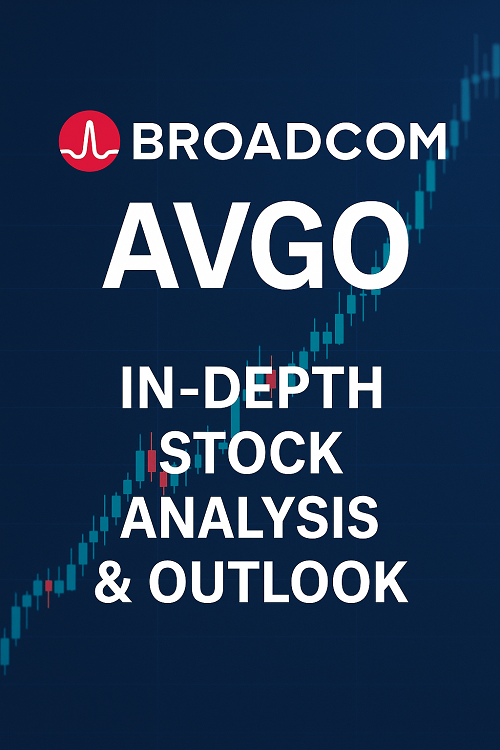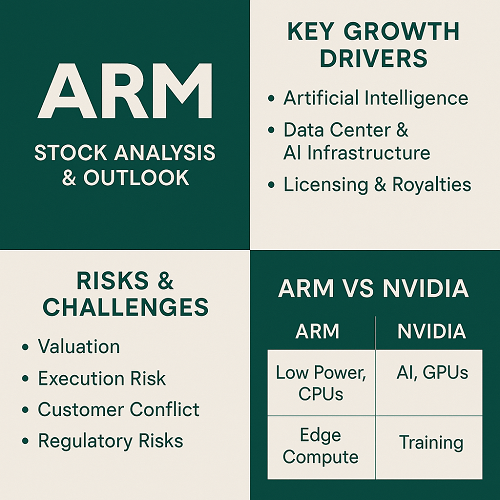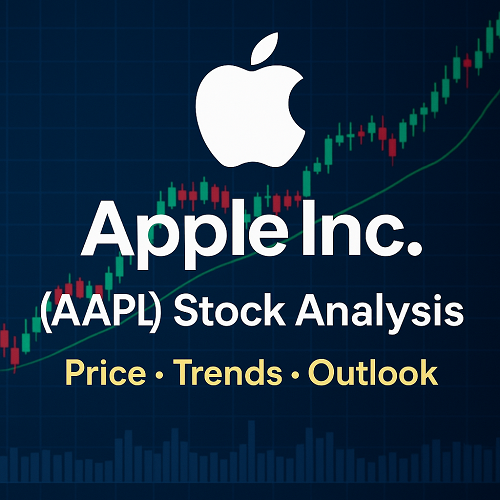Broadcom Inc (NASDAQ: AVGO) has emerged as one of the most powerful players in semiconductors and infrastructure software, leveraging strong growth from artificial intelligence (AI), hyperscale networking, and its enterprise software acquisitions. AVGO has posted significant revenue increases in recent quarters, particularly driven by AI-network demand. That said, its valuation is rich, and the stock carries risks that investors need to understand. Investors should keep an eye on the avgo stock price to better assess their investment decisions.
Key takeaways:
- Significant AI revenue growth (year-over-year increases of ~40-60%+ in recent periods).
- Recent large AI chip orders (~US$10B deal) boosting investor sentiment and expectations.
- Very high valuation metrics (P/E, EV/EBITDA) relative to peers; forward multiples appear stretched.
- Strong balance sheet, but high debt, regulatory risk, supply chain issues, and dependency on big customers are nontrivial headwinds.
Company Profile & Business Model
History & Structure
- Broadcom Inc evolved from Avago Technologies acquiring Broadcom Corporation in 2016; the combined entity retained the AVGO ticker.
- Headquartered in Palo Alto, California. Its operations cover semiconductors and infrastructure software.
Lines of Business
Broadcom operates across multiple technology verticals:
- Semiconductors: Chips for networking, broadband, wireless communication, data centers.
- Infrastructure Software: Via its VMware acquisition and other software assets. These provide recurring revenue and higher margins.
- AI / Custom ASICs / Networks: Broadcom is increasingly building custom chips for AI workloads and high-bandwidth networking, positioning as an alternative to GPU-centric suppliers for certain tasks.
This blended business mix gives Broadcom a dual exposure: hardware that can have cyclical pressures, and software/infrastructure that tends to be more sticky and recurring.
Recent Financial Performance
Revenue & Earnings Growth
- In its fiscal Q2 2025, Broadcom posted record revenue, growing ~20% year-over-year, largely attributed to demand in AI, especially in AI networking.
- Adjusted net income also showed strong growth; EPS significantly higher yoY.
Margin Trends and Profitability
- Operating margin, profit margin, and EBITDA margins remain strong, particularly driven by high margin software/infrastructure businesses.
- Gross margin benefits from scale, but there can be pressures from component costs, supply chain delays, or increased R&D spending especially for AI ASICs.
Cash Flow & Capital Structure
- Broadcom generates substantial operating cash flow. Free cash flow remains healthy, allowing for R&D investment, acquisitions, and returns to shareholders.
- However, debt levels are considerable. The company must manage interest rates, debt servicing, and ensure that leverage doesn’t become a drag.
Key Drivers: AI, Networking, Software
AI & Custom ASICs
- Broadcom has benefited from strong demand for chips tailored to AI workloads and for networking infrastructure feeding AI systems. Recently announced multi-billion dollar AI chip orders (~US$10B) send a strong signal.
- Analysts point out that Broadcom commands a large share of the ASIC/custom chip market, which is expected to expand rapidly over the next few years.
Networking & Infrastructure
- High bandwidth networking, Ethernet switches, data center interconnects are crucial for the AI boom. Broadcom is well placed here.
- Its software infrastructure (including VMware and related assets) helps in recurring revenue, licensing, and services, smoothing out hardware cycles.
Software / Enterprise Business
- The VMware acquisition adds a large software and services business, increasing margin stability.
- License renewals and software support contribute recurring income, which is highly valued by investors looking for predictability.
Valuation Metrics & Comparative Analysis
Here’s how AVGO stacks up on valuation, both internally (historical) and relative to peers.
| Metric | Most Recent Data | Interpretation |
|---|---|---|
| Trailing P/E | Extremely high (well above sector average) | Indicates high investor expectations; risk if growth slows. |
| Forward P/E | Lower than trailing but still elevated | Suggests growth projections are built in; less margin for error. |
| PEG Ratio | Below 1 in many recent metrics, but volatile | If sustained, could indicate stock is not overvalued given growth; but depends on actual future growth. |
| EV/EBITDA | Very high compared to many semiconductor peers | Premium valuation reflects both the software mix and AI growth premium. |
Peer Comparison
Peers might include NVIDIA (NVDA), AMD, Intel, Marvell, and similar in networking/chips, plus software infrastructure firms.
- Against NVDA: Broadcom is less exposed to GPU training workloads but more diversified across networks/software.
- Against AMD/Intel: Potentially more stable cash flow via software and licensing.
Investors should compare not just raw metrics but growth, margin stability, customer concentration, innovation pipeline, regulatory exposure.
Risks and Headwinds
Even with strong tailwinds, Broadcom incurs several risks:
- Regulatory & Trade Risks
- Export controls on AI chips, semiconductor supply chain constraints.
- Any disruption due to trade tensions (US-China), restrictions on chip shipments, or bans could harm sales.
- Valuation Correction
- With lofty valuation multiples, any missed earnings, lower growth, or weaker guidance could trigger significant downside.
- Customer/Supplier Concentration
- Dependence on large customers (hyperscalers), who can negotiate hard and may shift suppliers.
- Supplier constraints or margin pressure from materials costs, logistics, etc.
- Competition
- Other chip designers and manufacturers aggressively pursuing AI, networking, cloud infrastructure markets.
- NVDA remains dominant in many AI training use-cases; Broadcom competes more in ASICs / inference / networking—segments which may have lower margins or more specialized demand.
- Macroeconomic / Cyclicality
- Semiconductors are cyclical. Recession fears, interest rates, raw material inflation, supply chain disruptions all affect margins and demand.
- Execution Risk from AI Roadmap
- If Broadcom’s custom AI chip wins are fewer or more limited than expected; or if its ASIC designs lag in performance/efficiency vs competition.
Future Catalysts & Forecasts
What may drive Broadcom stock higher over time:
- Large Deal Wins in AI: The ~$10B order and others like it can materially raise revenue outlooks.
- Further Software Growth: As VMware and other infrastructure software settle in, recurring revenue will smooth earnings and possibly improve margins.
- New Product Lines / Technologies: ASICs, AI accelerators, next-gen networking (e.g. optical, high-speed Ethernet), 5G/6G wireless, etc.
- Cost Efficiency & Integration Gains: Better margins from integrating hardware + software, optimizing supply chain, manufacturing efficiencies.
- M&A: Additional strategic acquisitions could broaden capabilities, especially in AI tools, integration, or infrastructure.
Analysts’ forecasts vary, but many see continued double-digit revenue growth (20-50% in AI lines), though base business growth likely lower.
Investment Thesis: Buy, Hold, or Sell?
Given the above, here are possible scenarios:
- Bull Case (Buy): If we assume Broadcom continues its AI momentum, secures more large deals, controls costs, and software business keeps growing— AVGO could see >20-30% upside from current levels. The premium valuation is justified.
- Base Case (Hold): Growth continues but perhaps slightly less impressive; some quarters may miss consensus; valuation remains high. Returns may be moderate, with risk of volatility.
- Bear Case (Sell / Avoid): If AI demand slows, regulation intervenes (e.g. export restrictions), or competition erodes margins—AVGO’s high valuation could suffer. Drop in forward guidance or earnings could trigger sharp downside.
Technical Analysis Snapshot
For more active traders or those considering entry points:
- Trend: Strong upward trend year-to-date; sharp gains particularly after earnings reports or AI-related announcements.
- Moving Averages: Price well above long-term averages (200-day), but short-term pullbacks possible toward 50-day MA after sharp runs.
- Support Levels: Likely near previous consolidation zones. Watch historical price clusters.
- Resistance Levels: Round numbers or psychological price barriers, or peaks from recent highs.
- Volume Patterns: Spikes in volume during AI deals or earnings announcements suggest strong conviction; dry volume in consolidation suggests patience needed.
Technical indicators (RSI, MACD) may show overbought regions periodically, which could signal pullbacks or consolidation phases.
Conclusion
Broadcom (AVGO) is a compelling growth story in the semiconductor + infrastructure software space, particularly given its positioning in networking and AI infrastructure. The stock comes with strong tailwinds and recent deal wins that reinforce its growth narrative.
However, the valuation is rich, and downside risks—macroeconomic, regulatory, competition—are real. For investors:
- If your time horizon is multi-year, and you’re comfortable with some volatility, Broadcom could be a core holding.
- If you’re more short-term or risk-averse, waiting for a pullback might offer a safer entry.
- Keep a close eye on quarterly guidance, AI deal announcements, and margin trends.





 XAUT-USD
XAUT-USD  AMD
AMD  MARA
MARA  SHOP
SHOP  BULL
BULL  CL=F
CL=F